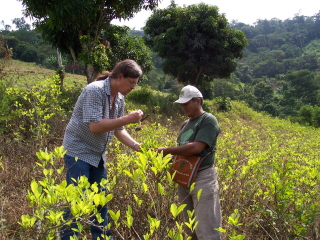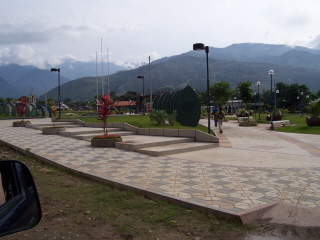Impelled by profits from the coca trade and crackdowns in other parts of the country, coca farmers in Peru's south-central Apurimac and Ene River Valleys (VRAE) region are pushing into indigenous lands in the country's Amazon jungle, according to a new report from the Inter Press Service news agency. The occupants of those territories are not pleased.

Although Peruvian authorities are undertaking crop eradication efforts in other parts of the country, such as the Huallaga Valley, such efforts are on hold in the VRAE, where authorities fear igniting the fuse on an explosive mixture of poverty, anti-government sentiment, drug gangs, and remnants of the Shining Path who have devolved into drug traffickers or protectors of traffickers.
The commissioner for peace and development in the central jungle region, Mario Jerà Kuriyama, told IPS that indigenous Asháninka people in the area have complained repeatedly about the incursions by would-be coca-growers. In mid-July, Asháninka communities along the Ene River agreed to oppose encroachments by outsiders and protect their territories.
"Many small farmers have come into the central jungle region in the last few years to plant coca because of the higher profit margins it offers. But local indigenous people are opposed to their arrival, as they don't want strangers on their land," said Jerà Kuriyama.

One Asháninka community on the Ene, Shimpenshariato, has been particularly hard-hit, CARE technician Kilderd Rojas told IPS. After an all-day trek by automobile and boat to the remote village, Rojas reported large coca plantations near houses equipped with satellite dishes and other luxuries. "At least half of the community's land has been invaded, and of that proportion, 30 percent is planted in coca and the rest in other crops," Rojas said.
The coca growers' move into the indigenous lands is a predictable result of attempts to crackdown on coca growing and drug production in the region, said drugs and development expert Ricardo Soberón. "While the authorities celebrate their 'victories' against coca and drug production in other valleys, like the Huallaga valley, they are not noticing how the pendulum is swinging towards the central jungle, where the drug trafficking routes, armed terrorist groups, new areas of coca cultivation -- a series of factors that expose local indigenous people to the interests of the drug mafias -- are now concentrated," Soberón told IPS.
This work by StoptheDrugWar.org is licensed under Creative Commons Attribution-ShareAlike 4.0 International
Add new comment